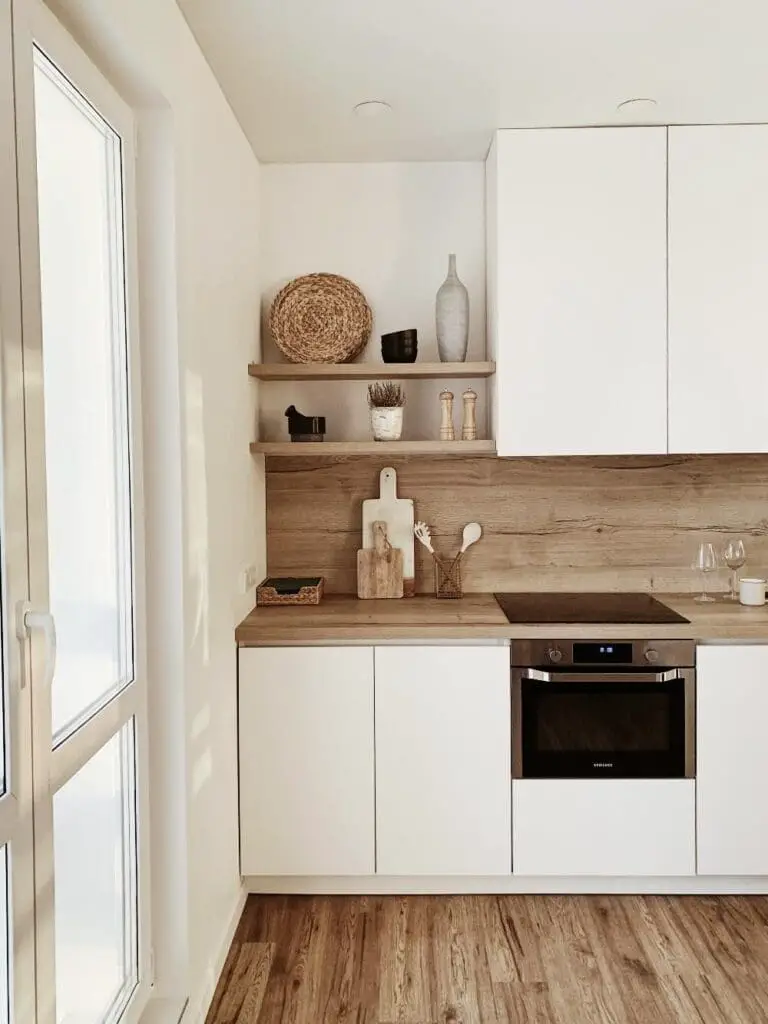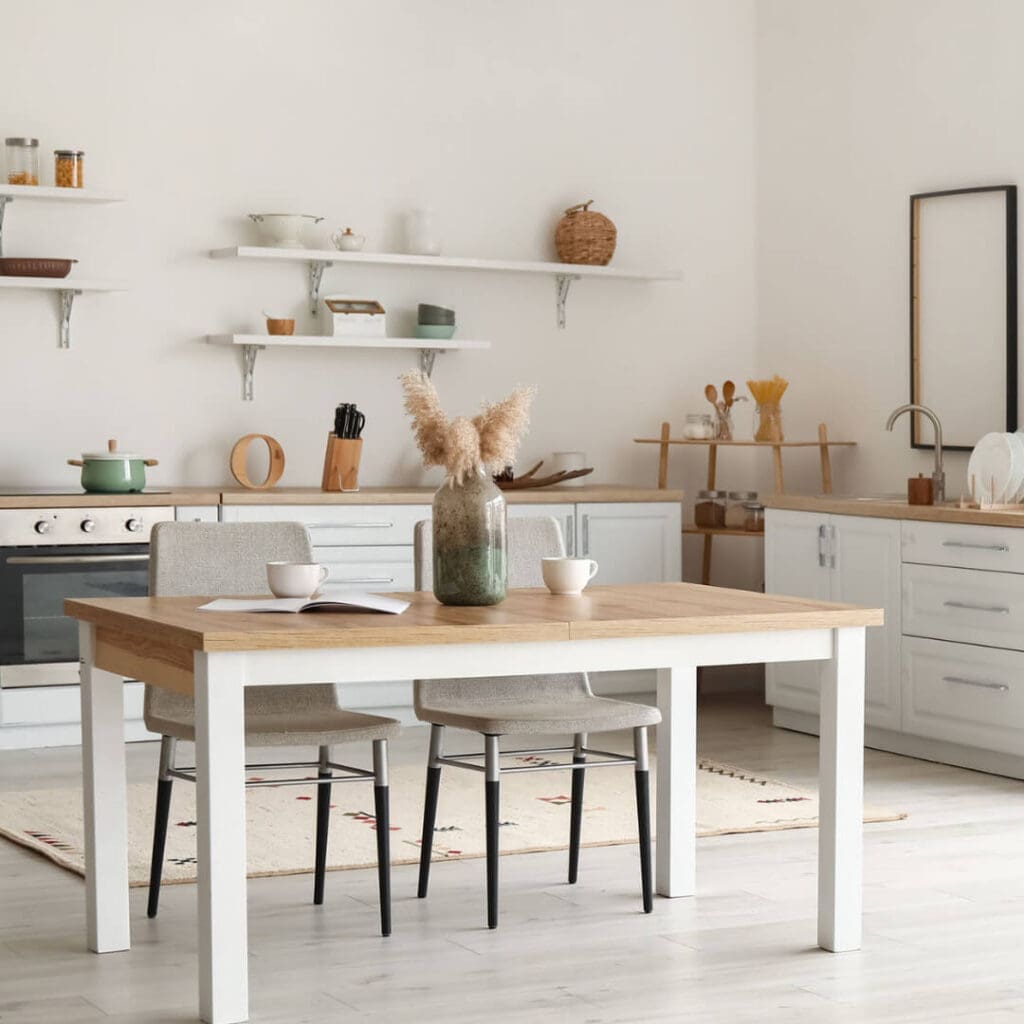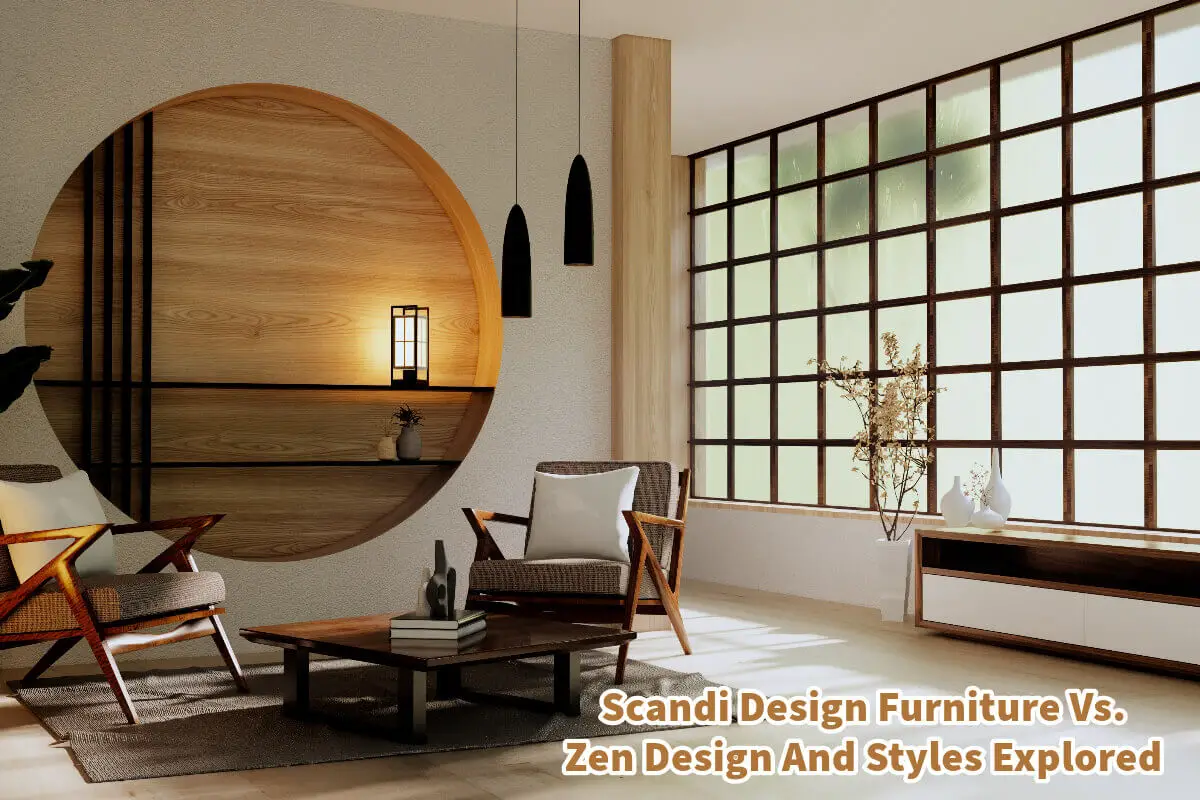Two of my favorite design approaches have always been the Scandinavian and Scandi tren and the Zen or a Japanese-influenced trend.
In interior design, two approaches have captured the hearts and minds of designers and homeowners alike: Scandinavian (or Scandi) and Japanese Zen styles. While they share some fundamental similarities—namely simplicity and an emphasis on functionality—each possesses unique characteristics that make them stand apart.
Table of Contents
- Scandi Design Furniture Vs. Zen Design: A Tale of Two Styles
- 15 Ways Scandi Design Vs. Zen Design Are Different.
- 1. Cultural Origins
- 2. Key Design Principles
- 3. Choice Of Materials
- 4. Color Palette
- 5. Light And Space
- 6. Furniture Design
- 7. Openness Vs. Enclosure
- 8. Decorative Accents
- 9. Textiles
- 10. Storage Solutions
- 11. Window Treatments
- 12. Influence Of Outdoor Elements
- 13. Overall Aesthetic
- 14. Influence Of Philosophy
- 15. Approach To Minimalism
- Related Content
Scandi Design Furniture Vs. Zen Design: A Tale of Two Styles
I am drawn to Scandinavian and Japanese Zen design styles, as they both exude an innate sense of tranquility and purpose. While they converge on principles like simplicity and functionality, they diverge in meaningful ways, making each uniquely appealing.
Scandinavian design focuses on a cozy, warm atmosphere, often achieved through natural materials like wood and wool. Natural and artificial light plays a crucial role in enlivening spaces. Its color scheme leans toward neutral tones, with occasional pops of color.
On the other hand, the Japanese Zen style leans more towards spiritual simplicity. It incorporates natural elements but places a greater emphasis on minimalist arrangements and open spaces.

Zen interiors often employ a subdued color palette that leans towards earth tones, blacks, and whites. The idea of “Ma,” or negative space, plays a significant role in encouraging mindfulness and the appreciation of empty areas as potential for possibility.
Both styles value craftsmanship and longevity over disposability, focusing on quality materials that age gracefully over time.
While Scandinavian design might envelop you in a warm, cozy embrace, a Japanese Zen space is more likely to evoke a sense of calm and mindfulness. Both have much to offer, depending on what you’re seeking from your living environment.
15 Ways Scandi Design Vs. Zen Design Are Different.
This blog post aims to provide a detailed comparison between these two iconic styles, exploring 15 ways they differ to help you choose the one that aligns with your aesthetic sensibilities.
1. Cultural Origins
Scandi design originates from the Nordic countries—Denmark, Finland, Norway, Sweden, and Iceland—where the harsh climates necessitated practical yet cozy interiors. On the other hand, Zen design comes from Japan, borrowing heavily from Buddhist philosophy to create spaces that encourage mindfulness and tranquility.
2. Key Design Principles
Scandi design prides itself on clean lines, functional spaces, and simple furnishings. In contrast, the Japanese Zen style prioritizes simplicity and sophistication, aiming to foster a peaceful environment.

3. Choice Of Materials
Scandi design often features light-colored woods like pine, oak, and beech. Zen design primarily uses natural materials such as bamboo, rice paper, and natural stones, emphasizing an organic aesthetic.
4. Color Palette
While both styles prefer neutral colors, Scandi interiors often feature brighter whites and pops of pastel or vibrant colors. Zen interiors use a more muted palette, focusing on earth tones and darker hues.
5. Light And Space
Natural light is crucial in Scandi design to combat the long, dark winters. In contrast, Zen design uses light more strategically, often employing soft, ambient lighting to create a sense of serenity.
6. Furniture Design
Scandi furniture is typically modern, with clean, straight lines. Zen furniture often features low-profile pieces closer to the ground, following the traditional Japanese seating.
7. Openness Vs. Enclosure
Scandinavian interiors often feature open floor plans to make the most of smaller spaces. Zen design, however, places importance on compartmentalization, creating secluded spaces for different activities.
8. Decorative Accents
Scandi design may include minimal decorative accents like geometric patterns or artwork. Zen design minimizes decor use, allowing the architecture and furniture to stand alone.
9. Textiles
In Scandi design, textiles like sheepskins, wool, and mohair add warmth. Zen design rarely uses such plush textiles, preferring simpler fabrics like cotton and silk that provide subtle texture.

10. Storage Solutions
Scandi design often incorporates built-in storage or multi-functional furniture to keep clutter at bay. Zen design uses hidden storage solutions to maintain a clean, uncluttered appearance.
11. Window Treatments
Scandi interiors often use sheer or no window treatments to maximize light. Natural fiber shades or rice paper panels may filter light gently in Zen interiors.
12. Influence Of Outdoor Elements
Scandinavian design often includes indoor plants and other elements that bring the outside in. Zen design connects with nature with garden views or small indoor rock gardens.
13. Overall Aesthetic
While both are minimalist at their core, Scandi design exudes a kind of casual, youthful energy. Zen interiors, in contrast, evoke a sense of ageless wisdom and tranquility.
14. Influence Of Philosophy
Buddhist principles heavily influence Zen design, aiming to create a space that encourages mindfulness. Scandi design doesn’t have such a spiritual underpinning but focuses more on practicality and comfort.
15. Approach To Minimalism
While both styles embrace minimalism, they do so differently. Scandi minimalism is about functional simplicity, whereas Zen minimalism is more about eliminating the non-essential to create a spiritually nurturing environment.
Scandinavian and Zen design styles offer unique characteristics that cater to different needs and preferences.
Whether you lean towards the cozy, functional appeal of Scandi furniture or the serene, sophisticated aura of Zen interiors, understanding these 15 differences can guide you in creating a great space that resonates with your lifestyle and values.
If you’re interested in producing Scandi furniture for export and manufacturing, we at Mondoro would be delighted to discuss how we can assist you.
Find out more about how Mondoro can help you create, develop, and manufacture excellent home decor and furniture products – don’t hesitate to contact me, Anita. Check out my email by clicking here or become a part of our community and join our newsletter by clicking here.
Mondoro gives out a FREE Lookbook to anyone interested. You can receive a copy of our latest Lookbook by clicking here.
Listen to our Podcast called Global Trade Gal. You can find it on all major podcast platforms. Try out listening to one of our podcasts by clicking here.
Subscribe to our Mondoro Company Limited YouTube Channel with great videos and information by clicking here.
Related Content
The Tre Natural Color Trend for Home Decor and Home Furniture
Tre means bamboo. But it also helps to symbolize the strength and ability to be resilient. The Tre trend concerns nature as part of your life and home. The Tre natural color palette has a lot of lush green tones. The Tre trend can be used with other home decor and furniture trends.
You can discover more by reading The Tre Natural Color Trend for Home Decor and Home Furniture by clicking here.
Can Cane Furniture Be Left Outside?
Cane furniture is not outdoor weather-resistant; manufacturers produce outdoor weather-resistant furniture from synthetic, not natural, cane materials. Throughout history, cane furniture was in outdoor settings in many parts of the world; during that time, there was no genuinely outdoor weather-resistant furniture.
You can learn more by reading Can Cane Furniture Be Left Outside? by clicking here.
What Is The Difference Between Rattan, Wicker, And Cane Furniture?
Rattan is a type of palm or vine that grows in the jungles of Southeast Asia. Rattan refers to a kind of natural material. Wicker is a type of weave using rattan materials. Cane also refers to a type of weave that is usually woven using rattan material.
You can learn more by reading our blog What Is The Difference Between Rattan, Wicker, And Cane Furniture? by clicking here.


